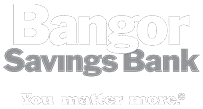
Financial experts, economists, and pundits have frequently discussed surge pricing recently. As inflation has risen in the U.S. and globally, surge pricing has increasingly affected everyday people and vulnerable businesses. It is evident in ride-hailing apps like Lyft and Uber and in housing markets.
Unlike a general price increase, surge pricing refers to specific price changes driven by shifts in supply and demand.
Definition and Concept
When demand for a product or service is high, and supply is low, surge pricing is a financial strategy companies use to increase their profits. It's categorized as a dynamic pricing strategy that shifts prices depending on market trends and other factors.
For example, if you've ever tried to book an Uber or Lyft in a big city during big holidays, you've likely experienced surge pricing. Depending on the supply and demand for a product or service, surge pricing can increase the price by two, three, or ten times its expected value.
Factors Influencing Surge Pricing
Surge pricing is becoming more common for many companies, especially with the increased use of A.I. systems that can quickly and easily recommend price targets based on current market factors.
Some of these factors that affect surge pricing and allow for its increasing use include:
- Supply and Demand: Supply and demand are major factors contributing to the surge in pricing. When a product or service is in high demand and there is little supply, corporations know that they can increase prices up to a point and still sell the product or service. In the eyes of a corporation, it's an easy way to increase profits.
- Inflation and Supply Chain Disruption: During the global pandemic, prices shot up across industries, including food and beverage, energy, gas, and many others. While inflation accounted for some of these price increases, surge pricing was also often in play. Due to supply chain disruption and inflation during the pandemic, prices naturally increased for many products. As prices increased, some companies used this as an excuse (and experiment) to raise their prices.
- Online Shopping: Companies can implement surge pricing more easily through online shopping. In a physical store, you might notice if a product's price changes when you revisit it. However, when shopping online, prices can fluctuate constantly, even though they may seem stable.
Furthermore, if you order groceries through an app, you may not be aware that you paid more for individual items than you did in the past. E-commerce has paved the way for surge pricing to take root without many people noticing.
Impact
Surge pricing significantly impacts people's finances worldwide. For instance, if you rely on a ride-sharing service for your daily commute, even small price increases can raise overall transportation costs over time. For consumers, surge pricing results in higher fees, often leading to dissatisfaction.
Excessive surge pricing can drive consumers to switch to cheaper competitors, explore alternatives, or become more self-reliant. For example, a person might choose a generic product, ride a bike to work instead of using a taxi, or make coffee or tea at home rather than purchase it.
Despite these effects, surge pricing can significantly boost profits and supply for companies that use this dynamic strategy.
Takeaway
Surge pricing is becoming standard across many industries. It impacts your utility bill, gas and grocery receipts, airline websites, and rent and home prices. The effects of surge pricing can devastate low-income people and those who depend on products or services that are vulnerable to price surges.
While surge pricing has undeniable downsides for consumers, the benefits to corporations are so great that it's unlikely we'll see any changes without government intervention or widespread action on the consumer's part.
